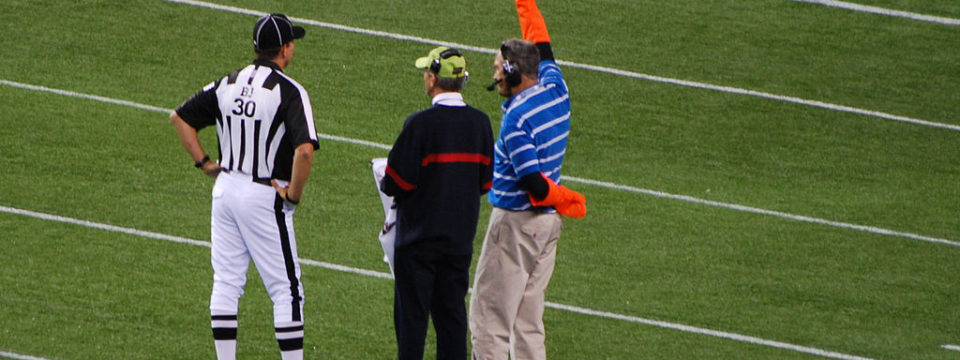I had to travel for business during the Super Bowl. While I don’t follow American Football all that much, I do watch the Big Game for the commercials. In recent years, though, it’s become increasingly unnecessary; the really significant advertisers release their long-form versions online, often weeks before the game.
But as you might expect, I do get sucked into the competition of the game once I start watching, regardless of the teams playing. And then the next yet-another-break-after-20-seconds-of-action loop becomes the visual equivalent of sisyphus.
I was at the airport and missing the game, but that didn’t bother me. I took the opportunity to see where and how the game was being shown. Screens at the myriad restaurants around the terminal betrayed the multinational and varied tastes of flyers: less than half showed the Super Bowl. The others either broadcast CNN or soccer (i.e. what most of the rest of the world thinks of as “football”).
This does question the veracity of the claim that “billions” watch the Super Bowl – but that’s another topic.
I was struck, however, by the preponderance of handheld devices tuned to the action. In the boarding area, at least six people were watching the game on their mobile phones or tablets. NBCSports’ made a wise decision to stream the game over the web and their mobile app. This enabled many fans to tune in without having to tether themselves to their televisions.
Smart devices are the new TV screen
This is part of an increasing trend we are all aware of: viewers of every age are turning to their smart devices to consume what was once the domain of traditional broadcast television. Netflix recently announced record new subscribers in Q1, 2018. This just bolsters the trend of “cutting the cable.” Disney will enter the streaming game soon, along with a host of other services.
I think you will see this cause “disruption” in the business and drive yet another nail into broadcast television’s coffin.
This presents some significant challenges to traditional cable service providers, as well as advertisers. Consider that most of the streaming services such as Netflix, Amazon Prime, and HBO, don’t run ads.
But they can also be potential opportunities for the smart advertisers.
As marketers and advertising professionals we need to ask the question: “are the days of commercials over?” Or will we just enter another world of opportunities?
A few years ago we attended the premier of the new Bond film in London. I was struck by two things straight away: one, the theatre was clean and did not smell of stale buttered popcorn, and two, there were very few ‘coming soon’ previews, but at least six or seven long-form commercials for various brands. That made me think: “why not work with the major theatre chains to run your clients’ ads before a film?”
And in an age when almost every trailers is a 10 minute spoiler for the upcoming film and increasingly commercials are like movie trailers, it wouldn’t be such a big deal if we watched a commercial for Coke instead.
